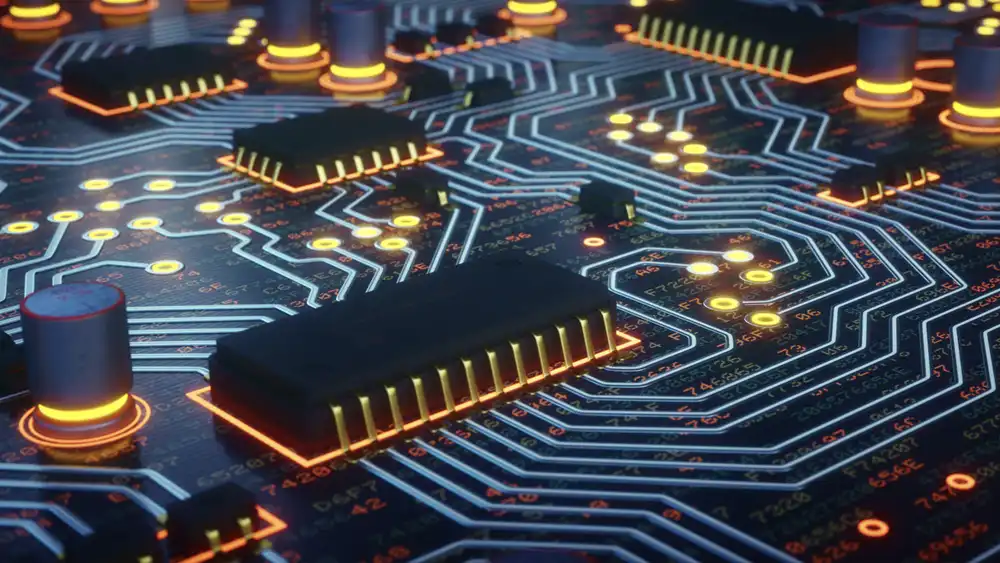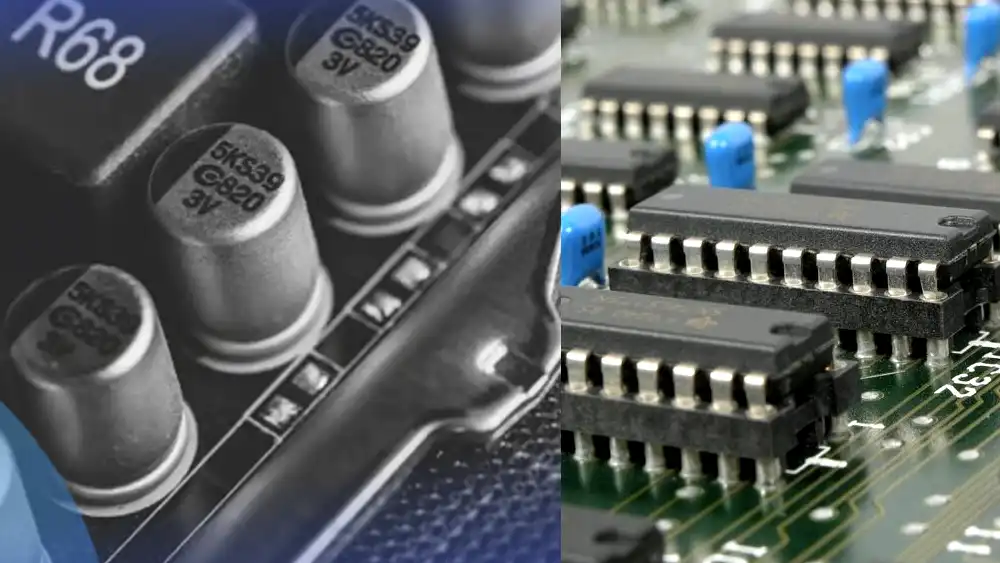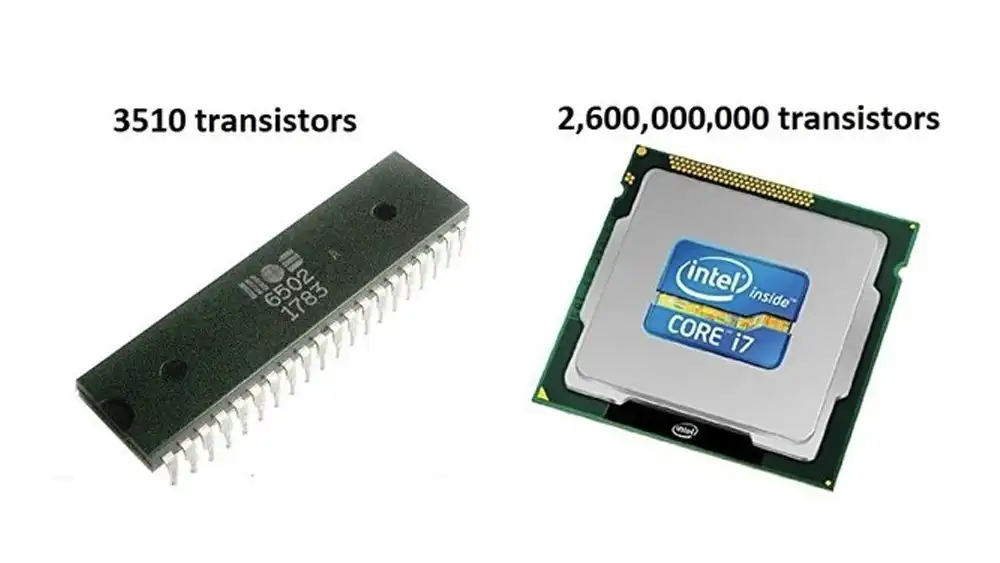The evolution of electronic components has dramatically transformed technology, driving the development of modern devices we rely on today. At the heart of this transformation are transistors and integrated circuits (ICs). Both play crucial roles in electronics, yet they serve different purposes and have unique advantages. This blog post provides an in-depth comparison of transistors and integrated circuits, exploring their characteristics, functions, applications, and impacts on technology.
What Is A Transistor
A transistor is a semiconductor device that serves as a fundamental building block in electronic circuits. It functions as a switch or an amplifier, controlling the flow of electric current between its terminals based on the voltage applied to its input. Transistors come in various types and configurations, but the most common types are bipolar junction transistors (BJTs) and field-effect transistors (FETs).
History and Development
The transistor, invented in 1947 by John Bardeen, Walter Brattain, and William Shockley at Bell Labs, marked a significant milestone in electronics. Replacing bulky and less reliable vacuum tubes, transistors revolutionized electronic circuits with their smaller size, improved reliability, and greater efficiency.
Types of Transistors
Bipolar Junction Transistor (BJT):
- Structure: Comprises three layers of semiconductor material: emitter, base, and collector.
- Function: Current-controlled device used for amplification and switching.
- Applications: Audio amplifiers, signal processing, and analog circuits.
Field-Effect Transistor (FET):
- Structure: Uses an electric field to control the flow of current.
- Types: Includes Junction FET (JFET) and Metal-Oxide-Semiconductor FET (MOSFET).
- Function: Voltage-controlled device ideal for high input impedance applications.
- Applications: Digital circuits, voltage-controlled amplifiers, and switches.
Advantages of Transistors
- Size: Smaller than vacuum tubes, allowing for miniaturization of circuits.
- Efficiency: Lower power consumption and heat generation.
- Reliability: More durable and longer-lasting than vacuum tubes.
- Speed: Faster switching capabilities.
Disadvantages of Transistors
- Complexity: Requires careful design to ensure proper operation.
- Thermal Sensitivity: Performance can be affected by temperature changes.
What Is An Integrated Circuit

An integrated circuit (IC), also known as a microchip or chip, is a miniaturized electronic circuit consisting of numerous interconnected electronic components, such as transistors, resistors, capacitors, and diodes, fabricated onto a small semiconductor material, typically silicon. These components are etched or deposited onto the semiconductor substrate using advanced manufacturing processes, such as photolithography.
History and Development
The integrated circuit, developed independently by Jack Kilby at Texas Instruments and Robert Noyce at Fairchild Semiconductor in 1958-1959, took the principles of transistors and encapsulated them into a single silicon chip. This innovation allowed for unprecedented levels of miniaturization and complexity in electronic devices.
Types of Integrated Circuits
- Function: Processes continuous signals.
- Applications: Audio amplifiers, voltage regulators, and analog signal processing.
Digital ICs:
- Function: Handles discrete signals (0s and 1s).
- Applications: Microprocessors, memory chips, and digital logic circuits.
Mixed-Signal ICs:
- Function: Combines both analog and digital functions on a single chip.
- Applications: Data converters, communication devices, and sensor interfaces.
Advantages of Integrated Circuits
- Miniaturization: High density of components on a single chip, leading to smaller device sizes.
- Cost Efficiency: Lower manufacturing costs for high-volume production.
- Reliability: Fewer physical connections reduce potential failure points.
- Performance: Improved speed and power efficiency due to shorter electrical paths.
Disadvantages of Integrated Circuits
- Customization: Less flexible than discrete components once fabricated.
- Heat Dissipation: More challenging due to high density of components.
- Development Cost: High initial design and fabrication costs.
Transistor vs Integrated Circuit

The comparison between transistors and integrated circuits (ICs) is fundamental in understanding the evolution of electronics and the progression towards more advanced and compact electronic devices. Let’s delve into the distinctions between these two essential components:
Transistor:
Characteristics:
- Functionality: Acts as a switch or an amplifier, controlling the flow of current between its terminals based on the voltage applied to its input.
- Types: Common types include bipolar junction transistors (BJTs) and field-effect transistors (FETs).
- Operation: In BJTs, current flows between the collector and emitter, controlled by the current or voltage applied to the base. FETs, on the other hand, modulate current flow between the source and drain terminals using an electric field applied to the gate.
- Applications: Widely used in amplifiers, switches, digital logic circuits, voltage regulation, and signal processing.
Advantages:
- Size: Relatively small, allowing for miniaturization of electronic circuits.
- Efficiency: Low power consumption and heat generation compared to older technologies like vacuum tubes.
- Reliability: More durable and longer-lasting than vacuum tubes.
- Speed: Offers faster switching capabilities.
Disadvantages:
- Complexity: Requires careful design to ensure proper operation.
- Thermal Sensitivity: Performance can be affected by temperature changes.
Integrated Circuit (IC):
Definition:
An integrated circuit, also known as a microchip or chip, is a miniaturized electronic circuit consisting of interconnected electronic components fabricated onto a small semiconductor material, typically silicon.
Characteristics:
- Functionality: Combines multiple electronic components, such as transistors, resistors, capacitors, and diodes, on a single chip.
- Types: Analog ICs, Digital ICs, and Mixed-Signal ICs, catering to various applications.
- Manufacturing: Fabricated using advanced semiconductor manufacturing processes, such as photolithography.
- Applications: Used in microprocessors, memory chips, digital logic circuits, amplifiers, voltage regulators, and sensor interfaces.
Advantages:
- Miniaturization: High density of components on a single chip, leading to smaller device sizes.
- Cost Efficiency: Lower manufacturing costs for high-volume production.
- Reliability: Fewer physical connections reduce potential failure points.
- Performance: Improved speed and power efficiency due to shorter electrical paths.
Disadvantages:
- Customization: Less flexible than discrete components once fabricated.
- Heat Dissipation: More challenging due to high density of components.
- Development Cost: High initial design and fabrication costs.
| Aspect | Transistor | Integrated Circuit |
|---|---|---|
| Definition | Semiconductor device regulating current flow or amplifying signals | Miniaturized electronic circuit with interconnected components |
| Functionality | Acts as a switch or amplifier, controlling current flow | Combines multiple components on a single chip |
| Types | Bipolar Junction Transistors (BJTs), Field-Effect Transistors (FETs) | Analog ICs, Digital ICs, Mixed-Signal ICs |
| Operation | Controlled by current or voltage applied to its terminals | Utilizes multiple interconnected components on a single chip |
| Applications | Amplifiers, switches, digital logic circuits, signal processing | Microprocessors, memory chips, amplifiers, sensor interfaces |
| Size | Relatively small compared to vacuum tubes | Compact due to high density of components on a single chip |
| Manufacturing | Not applicable; individual components assembled into circuits | Fabricated using advanced semiconductor manufacturing processes |
| Advantages | Efficiency, reliability, speed | Miniaturization, cost efficiency, reliability, performance |
| Disadvantages | Complexity, thermal sensitivity | Limited customization, heat dissipation, high development cost |
This table provides a concise overview of the key differences between transistors and integrated circuits, helping to understand their distinct characteristics, functionalities, and applications.
While transistors offer flexibility and customization for specific applications, integrated circuits provide compactness, reliability, and performance for a wide range of electronic devices. Both components have played instrumental roles in shaping the modern world and continue to drive innovation across various industries. Understanding the distinctions between transistors and integrated circuits is crucial for designing and developing electronic systems tailored to specific needs and requirements.
Manufacturing and Cost
Transistors:
- Higher cost and time for manual assembly of discrete components.
- Suitable for low-volume and specialized applications.
Integrated Circuits:
- Economies of scale reduce cost for high-volume production.
- Higher initial development cost but lower per-unit cost in large quantities.
Performance and Efficiency
Transistors:
- Can be selected for specific performance characteristics.
- Ideal for applications requiring high power and specific tuning.
Integrated Circuits:
- Optimized for efficiency and speed.
- Suitable for applications where size, power consumption, and performance are critical.
Reliability and Durability
Transistors:
- Easier to diagnose and replace individual faulty components.
- May require more maintenance due to more connection points.
Integrated Circuits:
- Fewer physical connections reduce potential failure points.
- More robust and durable in harsh environments.
Applications
Transistors:
- Amplifiers, switches, and basic logic circuits.
- Custom and specialized electronic designs.
Integrated Circuits:
- Microprocessors, memory devices, and complex digital systems.
- Consumer electronics, automotive systems, and industrial automation.
Impact on Technology
Transistors: The Foundation
Transistors laid the foundation for modern electronics, enabling the development of smaller, more efficient, and more reliable electronic devices. They are the building blocks of all modern ICs and have been pivotal in the evolution of technology from the era of vacuum tubes to the digital age.
Integrated Circuits: The Revolution
Integrated circuits took the principles of transistors and scaled them to new heights, enabling the creation of sophisticated electronic devices that are integral to contemporary life. The advent of ICs led to the development of personal computers, smartphones, and countless other technologies that define the modern era. They facilitated advancements in fields such as telecommunications, computing, and consumer electronics.
How Does an Integrated Circuit Differ From a Transistor
An integrated circuit (IC) differs from a transistor in several significant ways, reflecting the progression of electronic technology from discrete components to highly integrated systems. Here’s how they differ:
Integration of Components:
- Transistor: A transistor is a discrete semiconductor device that performs a specific function, such as amplification or switching. It consists of three terminals: emitter, base, and collector.
- Integrated Circuit: An IC is a miniaturized electronic circuit that integrates multiple electronic components onto a single semiconductor chip. These components can include transistors, resistors, capacitors, and diodes, among others.
Complexity:
- Transistor: Transistors are individual components that can be used to build simple or complex electronic circuits. They are typically used as basic building blocks in electronic designs.
- Integrated Circuit: ICs are highly complex systems that can incorporate thousands to billions of transistors and other components onto a single chip. This high level of integration allows for the creation of sophisticated electronic devices with advanced functionality.
Manufacturing:
- Transistor: Transistors are manufactured as discrete components and are assembled onto circuit boards manually or using automated processes.
- Integrated Circuit: ICs are fabricated using advanced semiconductor manufacturing processes, such as photolithography, deposition, and etching. These processes allow for precise placement and interconnection of components on the semiconductor substrate.
Size and Form Factor:
- Transistor: Transistors are relatively small compared to older electronic components like vacuum tubes, but they are larger than individual components on an integrated circuit.
- Integrated Circuit: ICs are extremely compact and can contain millions or even billions of components on a single chip. This miniaturization enables the creation of smaller and more powerful electronic devices.
Functionality:
- Transistor: Transistors can function as amplifiers, switches, or other types of signal processing elements, depending on their configuration and application.
- Integrated Circuit: ICs can perform a wide range of functions, including amplification, signal processing, logic operations, memory storage, and communication, depending on their design and application.
Customization:
- Transistor: Transistors can be selected and configured for specific performance characteristics, making them suitable for customization in electronic circuits.
- Integrated Circuit: ICs are designed for specific applications and are less customizable once fabricated. However, they can be designed with different features and functionalities to meet the requirements of various applications.
While transistors and integrated circuits both play essential roles in electronics, they differ in terms of integration level, complexity, manufacturing processes, size, functionality, and customization options. Integrated circuits represent a significant advancement in electronic technology, enabling the creation of smaller, more powerful, and more sophisticated electronic devices.
How Many Transistors in an Integrated Circuit

An integrated circuit (IC) can contain a huge number of transistors, ranging from thousands to billions, depending on its complexity and functionality. These transistors are intricately interconnected on a single semiconductor chip, allowing for the integration of various electronic components onto a compact and efficient platform.
In modern electronic devices, such as microprocessors and memory chips, transistors play a crucial role in performing essential functions like amplification, switching, and signal processing. Integrated circuits harness the power of these transistors to deliver high-performance computing, communication, and control capabilities.
Transistors contain a huge number of integrated circuits, enabling the seamless operation of complex electronic systems. This integration not only reduces the size and weight of electronic devices but also improves their reliability, efficiency, and functionality.
Looking ahead, the future of integrated circuits may lie in transistors based on two-dimensional materials. These materials, such as graphene and transition metal dichalcogenides (TMDs), offer unique properties that could revolutionize the design and performance of electronic devices. Transistors built from two-dimensional materials promise to deliver enhanced speed, energy efficiency, and scalability, paving the way for even more advanced integrated circuits in the years to come.
Conclusion
In summary, transistors and integrated circuits are both fundamental to the field of electronics, each with unique roles and benefits. Transistors serve as the essential building blocks, offering flexibility and customization for various applications. Integrated circuits, on the other hand, leverage the capabilities of transistors to deliver high-performance, compact, and cost-effective solutions for complex electronic systems.
The impact of these technologies on the development of modern computers, communication systems, and consumer electronics cannot be overstated. As we look to the future, the continued evolution and integration of transistors and ICs promise to drive further innovation, shaping the next generation of technological advancements.
Are you inspired to delve deeper into the world of electronics? Whether you’re an enthusiast, a student, or a professional, understanding the intricacies of transistors and integrated circuits is crucial. Explore our detailed guides, join our community for expert discussions, and stay updated with the latest trends in electronics. Subscribe to our newsletter for more in-depth articles, tutorials, and the latest updates in the ever-evolving field of technology!




















